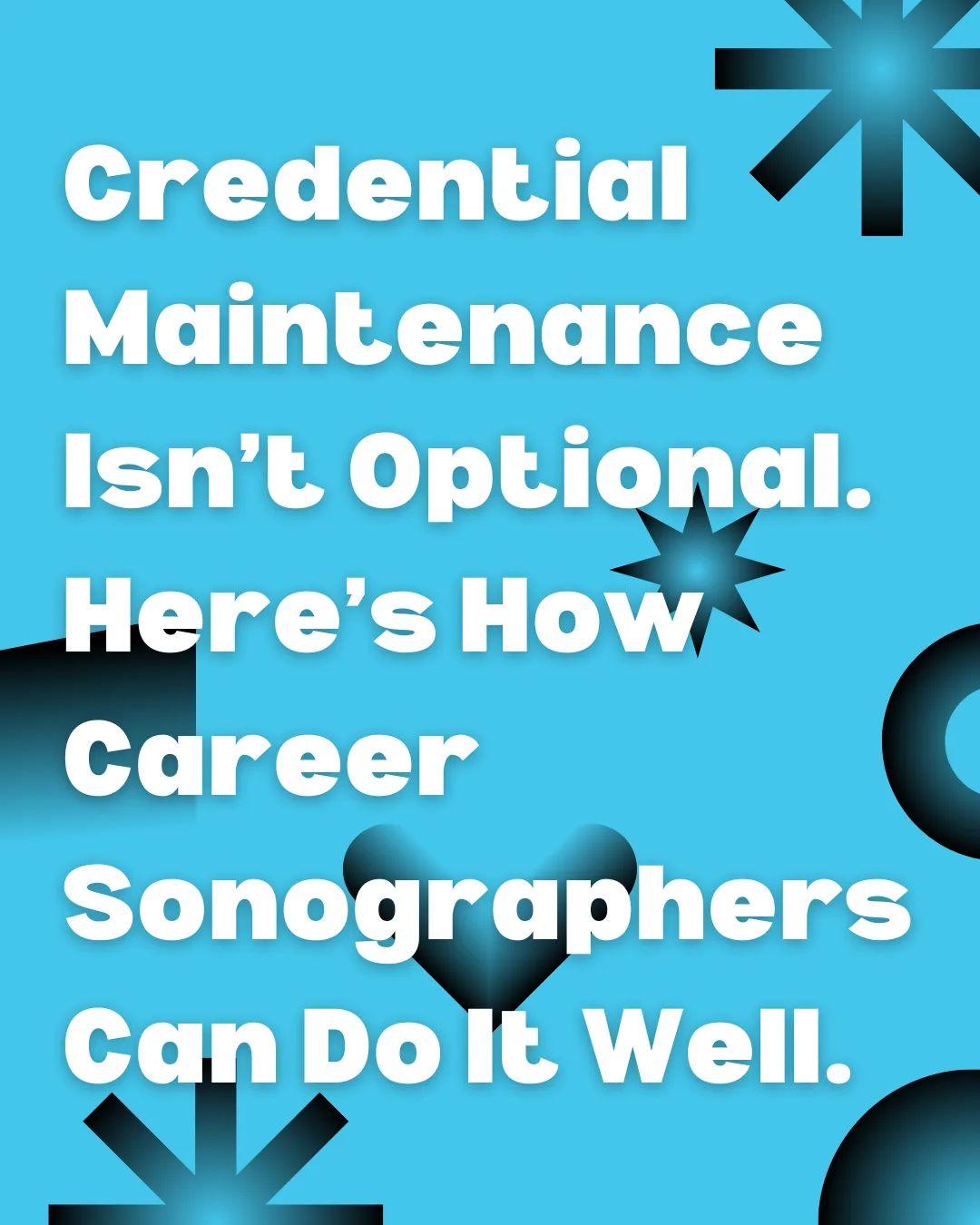If you’ve been in sonography for more than a few years, you know that keeping your credentials current can feel like an administrative headache. Most of us are guilty of saving our CME accumulation for the final months of the three-year cycle, scrambling to find credits before the deadline.
But this year, the American Registry for Diagnostic Medical Sonography (ARDMS) has given all of us a reason to rethink that pattern. Recent updates to their Maintenance of Certification (MOC) program are changing how sonographers will keep their credentials, and, potentially, how we think about lifelong learning in our profession.
The ARDMS Shift: From Credit Collection to Continuous Learning
Starting January 1, 2026, ARDMS registrants will participate in a new process called Knowledge Confirmation, a yearly series of short, specialty-specific quizzes delivered through the SKILLS platform. The first round of quizzes will be due December 31, 2026.
→ Source: ARDMS Knowledge Confirmation vs. Recertification and Cardioserv overview of 2026 updates.
In preparation for this change, ARDMS has adjusted its continuing medical education requirement from 30 CMEs to 25 CMEs for registrants. This reduction reflects the fact that part of the ongoing learning process will now take place through the new quizzes rather than being measured purely in CME hours.
→ Source: Inteleos CME Requirement Table.
It’s important to note that the Knowledge Confirmation is not an exam retake; it’s designed to help registrants stay connected with new concepts, evolving guidelines, and current standards in their specialty. Each quiz will include a small number of questions drawn from everyday practice, with immediate feedback and references for further study. The current expectations are that sonographers will take one quiz per credentials per quarter each year.
Why This Change Matters
At first glance, the reduction in required CMEs might seem like good news. Fewer hours to earn and less cost out of pocket. (Although many would argue it wasn’t enough). But it’s worth asking a deeper question: does fewer required hours mean we need less ongoing education, or does it mean we need smarter, more consistent engagement?
The ARDMS shift hints at a broader truth about professional competence: learning that’s continuous is more effective than learning that’s crammed. By adding yearly quizzes and reducing total CME hours, ARDMS is nudging the field toward spaced reinforcement — a model known to improve retention and application of knowledge over time.
And there’s another practical lesson here: if we’re honest, most of us could make our CME lives easier simply by spreading out the work. Waiting until the end of a triennium to “catch up” not only increases stress but also undermines the purpose of ongoing education — to keep our clinical judgment sharp in real time.
What are CCI and ARRT Doing?
While the ARDMS is leading this shift, sonographers credentialed through other organizations — such as Cardiovascular Credentialing International (CCI) or the American Registry of Radiologic Technologists (ARRT) — are also required to demonstrate continuing competence through ongoing education.
Each organization approaches this differently, but the underlying principle is the same: maintaining certification means maintaining currency. Whether your credentialing body calls it CEUs, CMEs, or continuing education credits, the goal is consistent — to ensure that professionals stay aligned with modern standards of care and technology.
The Value of Continuing Medical Education
So why are CMEs required at all? Historically, CME emerged as a way to formalize professional development in medicine and allied health fields. The assumption was simple but important: technology, best practices, and safety guidelines evolve too fast for any clinician to remain competent on initial training alone.
For sonographers, that evolution has been dramatic — advances in transducer technology, strain imaging, fusion imaging, 3D/4D applications, and point-of-care ultrasound have all changed the landscape in just the past decade. Continuing education ensures that we not only keep up with these changes but also apply them responsibly.
Making CME Work for You
If you tend to earn your credits in bursts, you’re not alone, but you can make the new system work to your advantage. Here are some practical strategies:
-
Plan ahead. Review your renewal timeline at the start of each year. Your CME cycle runs on a three-year triennium; keep track in your ARDMS CME Bank.
-
Spread learning out. Instead of waiting for year three, aim to complete 8–10 CMEs per year. This keeps you audit-ready and reduces the scramble.
-
Leverage board exams. The ARDMS currently waives 15 CME credits for each new board examination you pass, meaning fewer credits are ultimately needed in your triennium.
-
Choose quality over quantity. Look for CMEs that challenge your understanding or update your clinical practice — not just those that are easy to earn.
-
Keep documentation organized. If you’re ever selected for an ARDMS CME audit, you’ll need to produce certificates showing your name, date, provider, and credit hours.
-
Use bundled opportunities. For example, ESP’s live webinars offer 12 CME credits, nearly fulfilling the entire triennium requirement for those who prefer a concentrated format.
-
Watch the 2026 timeline. The first Knowledge Confirmation quizzes will open in 2026, so now is the time to build consistent study habits that make yearly review feel routine rather than disruptive.
A Mindset Shift for Career Sonographers
Credential maintenance may be mandatory, but the mindset behind it is optional and that’s where the real difference lies. You can treat CME and the new quizzes as bureaucratic hurdles, or you can use them as built-in checkpoints for professional growth.
Think of each CME not as a credit, but as a micro-investment in your expertise, a way to stay relevant, expand your scope, and elevate the quality of care you provide. When you engage with your learning continuously, you’re not just maintaining credentials…you’re maintaining competence.
Final Thoughts
The ARDMS changes may have been the catalyst for this conversation, but the underlying message extends to all of us: credential maintenance isn’t optional, and neither is growth.
So as the 2026 Knowledge Confirmation quizzes roll out, don’t see them as one more task to add to your list, see them as an opportunity to bring learning back into rhythm with practice.
Start planning now, choose CME activities that genuinely add value, and make the next cycle the one where you don’t just keep your credentials current – you keep your knowledge alive.
→ Learn more about ARDMS Maintenance of Certification.
→ View your ARDMS CME Bank.
→ Explore ESP’s CME Catalog.


